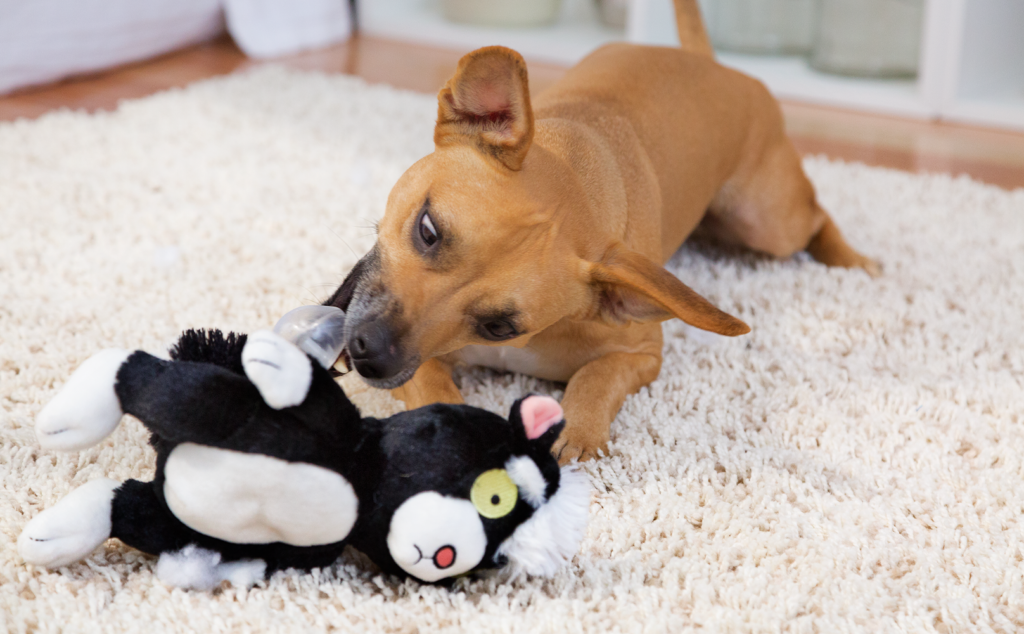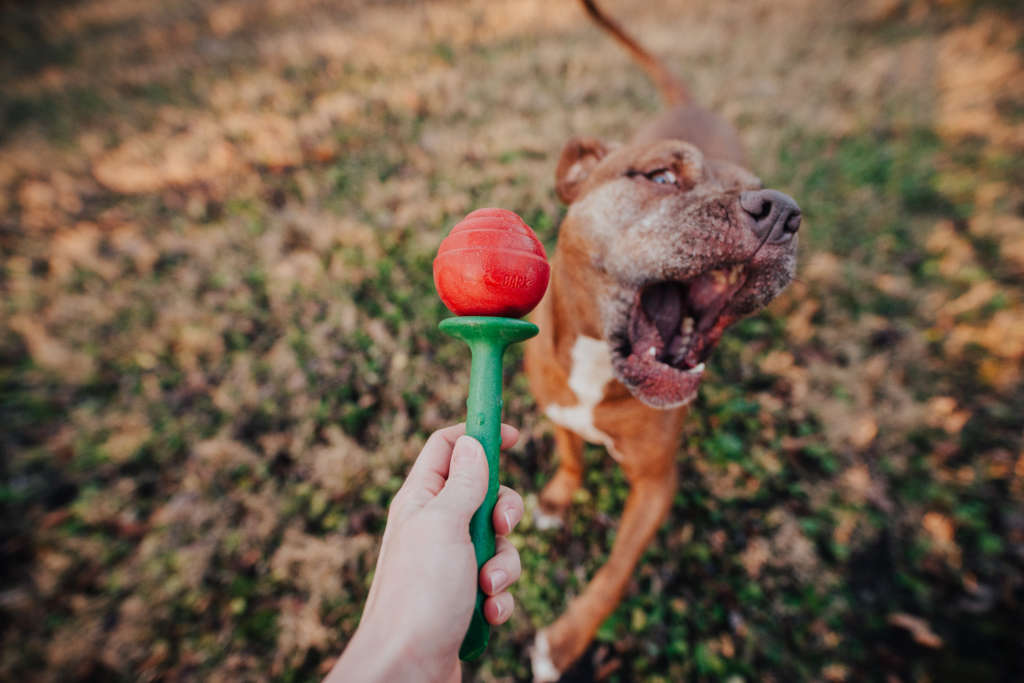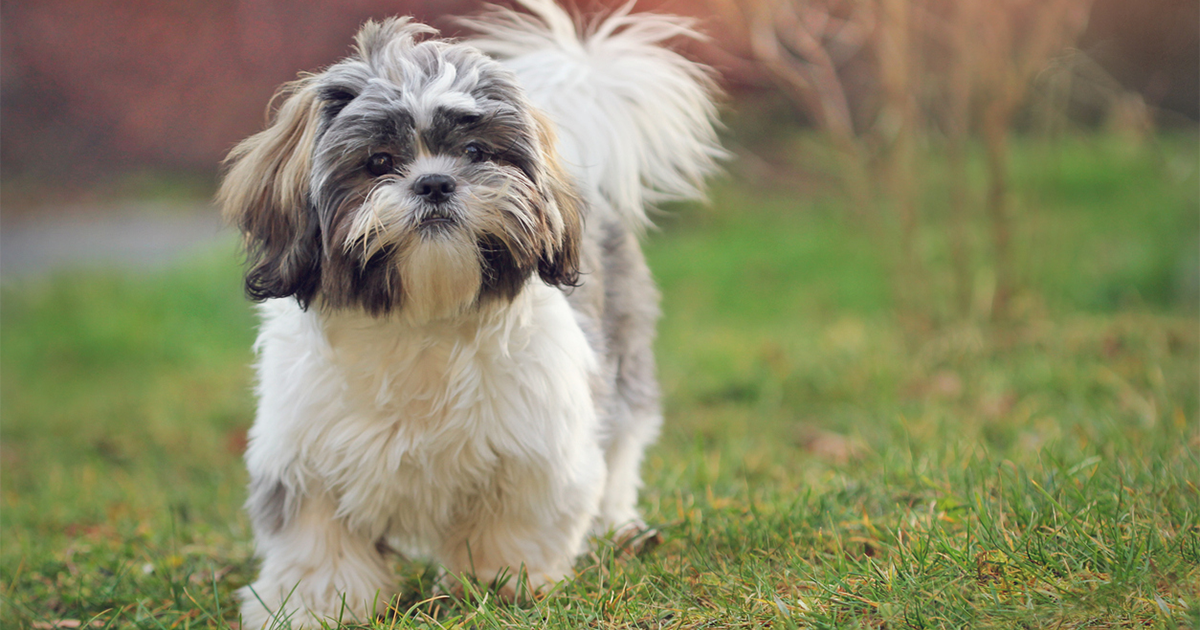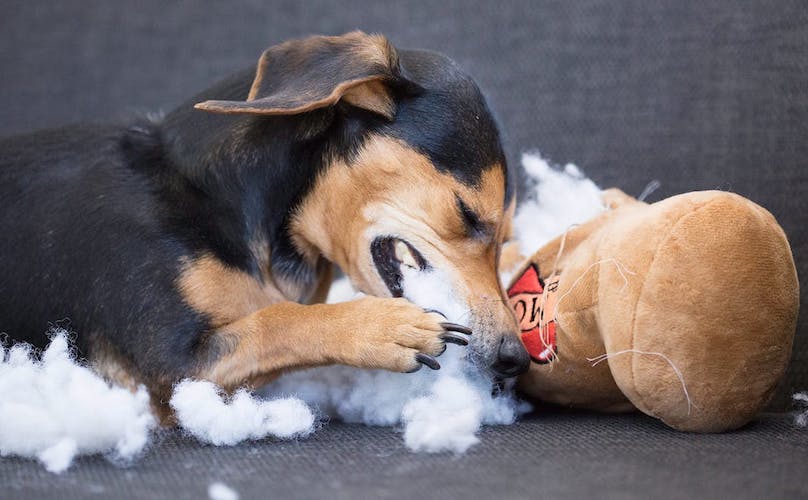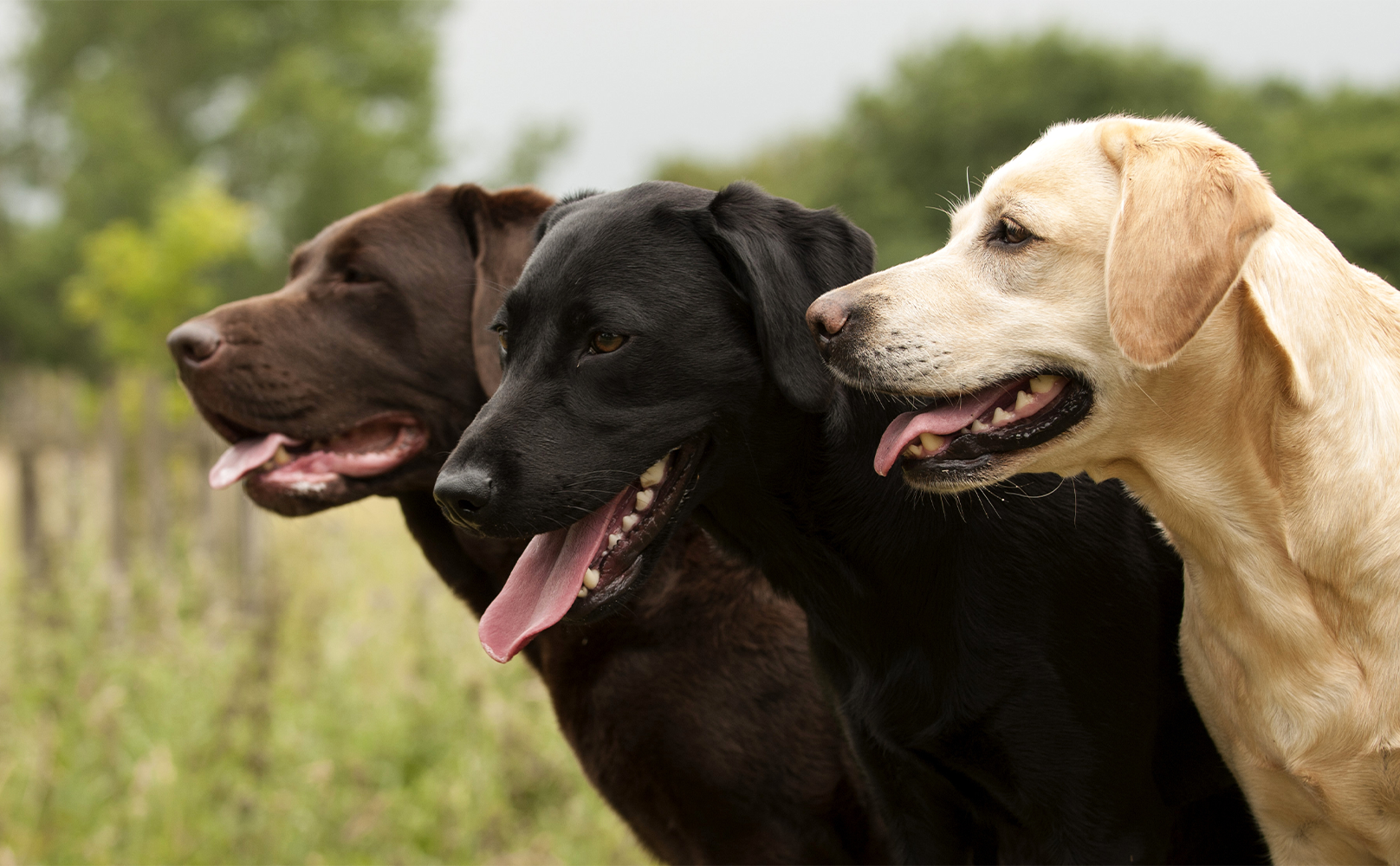Dogs love toys. It’s an undeniable fact for most with four legs and a wet nose. Playing with toys is a great way to bond with your dog, work their brains, and just have fun! But the road to playtime’s end is often paved with fluff… on the rug, on the couch, and hanging out of your dog’s mouth like a cat with a canary feather.
Dogs live to destroy toys—it’s a normal, even important way for them to play. But without proper supervision, ingestion of toy pieces or stuffing can cause an obstruction that requires emergency care. So what causes dogs to cross the line from shredding toys to swallowing them?
Why Do Dogs Eat Toys?
Dogs use their noses and mouths to explore the world, to discover what’s edible and what’s off-limits. Sometimes, during this neurosensory exploration, dogs eat things they shouldn’t, like socks, rocks, dirt, or wood. Most dogs outgrow this non-food, non-nutritional snacking (scientifically known as pica), but those that don’t risk resulting health issues, including:
- Gastrointestinal blockage
- Tummy aches
- Fractured or broken teeth
- Poisoning (for example, from fertilizer in ingested soil or grass)
Labradors in particular are guilty of developing pica, including one who ate 54 nails at just 8 weeks old1. The causes of this strange condition can be either medical or behavioral, though a lot of the time it’s difficult to pinpoint any one culprit.
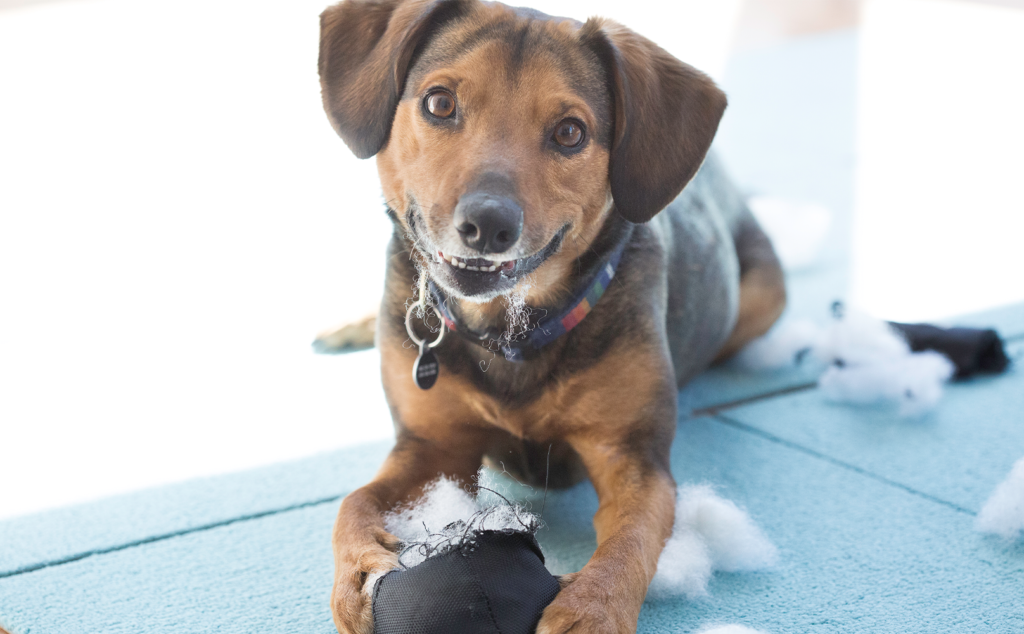

Nutritional Deficiencies Or Hormonal Imbalances
Your dog isn’t looking for a B12 energy boost by ripping apart their toys, but eating something like dirt could indicate a mineral deficiency. Anemia, for example, can cause an iron deficiency in dogs. More in-depth blood work, fecal, or urine tests should indicate whether nutrient-hogging parasites are present, or if your dog’s system is absorbing nutrients from their normal food like it should2.
Additionally, conditions like diabetes, hyperthyroidism, and overactive adrenal glands produce hormones that increase appetite. Basically, a dog with this problem is always hungry, and they’ll eat anything to satisfy that feeling.
If your dog compulsively eats non-edible items that provide no nutritional value, it’s time to have them examined by a vet.
Anxiety Or Boredom
If you or your vet suspect the problem is more mental than physical, ask yourself a few questions about your dog’s lifestyle—How much exercise does my dog get? Do they have appropriate toys to chew? Do they follow a daily routine? If the answer is no, or not enough, consider that behavior is to blame.
Dogs crave structure, and they need a consistent outlet for their energy. If these needs aren’t met, dogs may engage in destructive behavior (tearing up the couch) or worse (eating the couch)3. Take your dog for a decent walk before you leave for the day, or tire them out with a game of fetch or brief training session to put their mind and body to work. If you’re gone long hours, hire a dog walker to get your pup out during the day.
Establishing a routine for your dog’s day-to-day is essential. When dogs know what to expect, there’s no need to be stressed or anxious, but lack of a clear schedule means they don’t know what comes next, and that uncertainty can manifest in negative ways.
Is It Bad For Dogs To Eat Toys?
Absolutely! Small amounts of fluff can usually pass unhindered through your dog’s system, but it’s best to avoid the potential for ingestion altogether. Keep an eagle eye on your dog when they’ve got plush in their clutches, and discard it when stuffing first appears or they’re ripping pieces off. The same goes for rubber or nylon toys if your dog is gouging out bite-sized chunks.
These symptoms indicate that your pup may have swallowed a part of a toy or has a blockage:
- Vomiting
- Pain in the abdomen (they may not want to be touched in that area)
- Lethargy
- Hunching/arching their back
- Diarrhea
- Loss of appetite
Get them to the vet as soon as possible to discuss treatment options if you think your dog has swallowed any foreign objects.
How Do I Stop My Dog From Eating Toys?
If you know your dog has a tendency to rip up their toys in record time, put toys out of reach before you leave or if you can’t watch them, and always supervise play. Your home may even need to be a No Plush Zone if anyone with four paws is particularly skilled at performing squeaker-ectomies.
Participating in your pup’s play time can make a big difference as well. These are moments you can use to bond with your dog, make sure they’re burning off energy, crushing their boredom, stimulating their minds, and making sure nothing foreign gets swallowed. Plus, playing with YOU rather than solo makes playtime a whole lot more fun.
Are There Toys So Durable They Can’t Be Eaten?
Although there’s no such thing as an indestructible toy (if there were, it would be too dangerous for chewing), it will help if your pup faced more of a challenge by stepping up to the next level of durability. If they easily conquer soft plush toys, try plush with more ballistic nylon, or skip to fluff-free entirely with rubber or nylon toys.
Puzzle-type toys like treat dispensers also help dogs focus more on getting the reward rather than tearing them apart. Once the treats have all been freed, take the toy away until next time.
As always, if your dog tears open a stuffy or begins removing pieces off of something tougher, discard the toy. Often, nylon toys will get rough or sharp spots as dogs’ chompers go to town, but those areas can be sanded down with a Dremel to extend their life. When in doubt, throw it out! A new toy is always a better purchase than a trip to the emergency vet.
Sources
1Huo, N., Shi, Z., & Su, H. (2017). A serious case of nail-eating pica occurred in a Labrador dog. Approaches in Poultry, Dairy & Veterinary Sciences, 1(3). https://doi.org/10.31031/apdv.2017.01.000515
2Best Friends Animal Society. (n.d.). Pica in dogs: causes, diagnosis and treatment. Best Friends Animal Society. Retrieved March 17, 2022, from https://resources.bestfriends.org/article/pica-dogs-causes-diagnosis-and-treatment#:~:text=The%20causes%20of%20pica%20can,anxiety%2C%20or%20a%20depraved%20home
3Trott, K., & Snell, T. (n.d.). Unusual eating habits in dogs and cats. UC Davis Veterinary Medicine. Retrieved March 17, 2022, from https://www.vetmed.ucdavis.edu/sites/g/files/dgvnsk491/files/inline-files/Unusual_eating_habits.pdf

